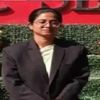
Electric Circuits and Fields: Network graph, KCL, KVL, node and mesh analysis, transient response of dc
and ac networks; sinusoidalsteady-state analysis, resonance, basic filter concepts; ideal current and voltage sources, Thevenin's, Norton's and Superposition and Maximum Power Transfer theorems, two-port networks, three phase circuits; Gauss Theorem, electric field and potential due to point, line, plane and spherical charge distributions; Ampere's and Biot-Savart's laws; inductance; dielectrics; capacitance.
Signals and Systems: Representation of continuous and discrete-time signals; shifting and scaling operations; linear, time-invariant and causal systems; Fourier series representation of continuous periodic signals; sampling theorem; Fourier, Laplace and Z transforms.
Electrical Machines: Single phase transformer -equivalent circuit, phasor diagram, tests, regulation and efficiency; three phase transformers-connections, parallel operation; auto-transformer; energy conversion
principles; DC machines-types, windings, generator characteristics, armature reaction and commutation,
starting and speed control of motors; three phase induction motors-principles, types, performance characteristics, starting and speed control; single phase induction motors; synchronous machines-performance, regulation and parallel operation of generators, motor starting, characteristics and applications; servo and stepper motors.
Power Systems: Basic power generation concepts; transmission line models and performance; cable performance, insulation; corona and radio interference; distribution systems; per-unit quantities; bus impedance and admittance matrices; load flow; voltage control; power factor correction; economic operation; symmetrical components; fault analysis; principles of over-current, differential and distance protection; solid state relays and digital protection; circuit breakers; system stability concepts, swing curves and equal area criterion; HVDC transmission and FACTS concepts.
Control Systems: Principles of feedback; transfer function; block diagrams; steady-state errors; Routh and Niquist techniques; Bode plots; root loci; lag, lead and lead-lag compensation; state space model; state
transition matrix, controllability and observability.
Electrical and Electronic Measurements: Bridges and potentiometers; PMMC, moving iron, dynamometer and induction type instruments; measurement of voltage, current, power, energy and power factor; instrument transformers; digital voltmeters and multimeters; phase, time and frequency measurement; Q-meters; oscilloscopes; potentiometric recorders; error analysis.
Analog and Digital Electronics: Characteristics of diodes, BJT, FET; amplifiers -biasing, equivalent circuit
and frequency response; oscillators and feedback amplifiers; operational amplifiers -characteristics and
applications; simple active filters; VCOs and timers; combinational and sequential logic circuits; multiplexer;
Schmitt trigger; multi-vibrators; sample and hold circuits; A/D and D/A converters; 8-bit microprocessor
basics, architecture, programming and interfacing.
Power Electronics and Drives: Semiconductor power diodes, transistors, thyristors, triacs, GTOs,MOSFETs
and IGBTs -static characteristics and principles of operation; triggering circuits; phase control rectifiers;
bridge converters -fully controlled and half controlled; principles of choppers and inverters; basis co
ncepts of adjustable speed dc and ac drives.



 Click it and Unblock the Notifications
Click it and Unblock the Notifications



























